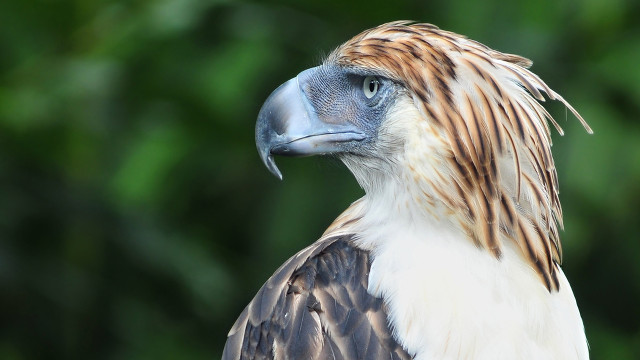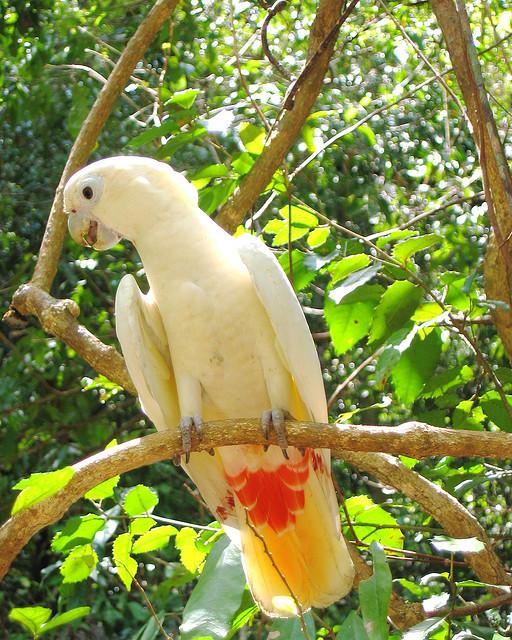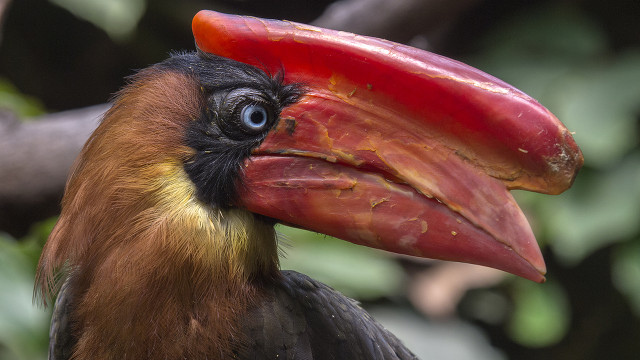SUMMARY
This is AI generated summarization, which may have errors. For context, always refer to the full article.

MANILA, Philippines – Last March, J Kahlil Panopio became one of the privileged few to lay eyes on a Philippine Eagle in the wild.
It was soaring below the canopy of the forest in Mingan Mountain Range in Gabaldon, Nueva Ecija. The eagle, which Panopio identified as a juvenile, perched on a tree 20 meters from where he and his group stood, revealing the majesty so natural to the king of Philippine birds.
For the first 5 minutes of the sighting, Panopio had used up all the space in his camera’s memory card. Such was his excitement he didn’t even bother composing the shots.
But after excitement crept fear.
“I also felt fear because what if I wasn’t a conservationist? What if I was a hunter? The eagle was so near so if I had a rifle instead of a camera it would already be dead.”
The Philippine Eagle (Pithecophaga jefferyi) is just one of 17 critically-endangered birds in the Philippines as of 2012. Joining it in the list are the iconic Rufous-headed Hornbill, Philippine Cockatoo, and Sulu Bleeding Heart.
There are also 14 endangered species and 53 vulnerable species in the country bringing the total number of threatened birds to 84.
Around a decade ago, the number stood at 74, showing that in just a span of 10 years, two more species became critically-endangered, two became endangered, and 6 became vulnerable.
According to BirdLife International, there are currently 604 bird species in the country – 6% of the world’s total number of known birds. This makes the Philippines one of the richest in avifaunal diversity. A third of the Philippines’ bird species are endemic or can only be found in the country.
The reason for this richness is the existence of many different types of bird habitats in the Philippines. The country is blessed with tropical rainforests, wetlands, pine forests, peat swamps and mangrove forests.
Old, new threats
But the country’s majestic birds continue to face grave threats, the largest of which is loss of habitat, according to the recently launched “The State of Philippine Birds” report by Haribon Foundation and BirdLife International.
Some 67% of Philippine birds spend their life or part of their life in a tropical forest. Yet only 22.8% of the country’s total land area is covered by forest. Of the 20 million hectares of forest a century ago, only around 7 million hectares remain.
Here is a rare video of a Philippine Eagle nesting in the wild:
The report said that for the Philippines to sustain its ecosystems, 54% of its land area should be forested.
A major cause of deforestation is the building of major roads. The closer a forest is to roads, the higher the rate of deforestation, said the report.
Population growth and commercial forest exploitation in the form of logging and mining are also major drivers of forest destruction that leave Philippine birds homeless.
Around 31% of Philippine birds live in wetlands like lakes, rivers, ponds, marshes, estuaries and mangrove forests.
But these bird habitats are destroyed when humans clear mangroves to put up aquaculture facilities like fish pens. Wetlands are also reclaimed and turned into resorts, shopping centers or residential areas.
The economic activities then drive pollution, further degrading wetlands when artificial feeds from fish pens or sewage from establishments get in the water.
For example, the 30,000 Garganeys (Anas querquela) recorded by bird watchers in Candaba Marsh in Pampanga in the 1980s were reduced to 3,000 in the year 2000.
Targeted by farmers
The remaining 32% of Philippine birds depend on agricultural areas for survival. These birds eat the invertebrates, crustaceans, frogs and reptiles that thrive in crop fields.
But farmers mistakenly believe the birds eat the crops too. The large birds become easy targets of desperate farmers who could have benefited from the birds as forms of natural pest management.
Chemical herbicides and pesticides used in farms can also be toxic for birds.
 These are some of the reasons why the Philippine Cockatoo, which frequents corn and rice fields, has reached Critically Endangered status.
These are some of the reasons why the Philippine Cockatoo, which frequents corn and rice fields, has reached Critically Endangered status.
With their dramatic plumage and unique features, Philippine birds are also hunted to be sold as exotic pets or as trophy killings, said Panopio who works for Haribon Foundation. (READ: Haul of endangered birds seized in Bicol)
When locals see big birds while out hunting, the tendency is still to shoot it, he said.
But a more far-reaching threat is looming for these avian jewels.
In the next 40 years, existing bird habitats are likely to become increasingly unsuitable for birds due to climate change.
The changes in temperature and rainfall patterns that are effects of global warming are expected to cause birds to move to higher-elevated, cooler habitats. The problem is, the prey they feed on may not move to these new habitats as fast.
If climate change projections continue, many species – including those thought to be safe – could become extinct by 2050.
Bringing the birds back
But if humans and their activities are largely responsible for the decline in Philippine birds, humans can also bring them back.
Some interventions have already proven effective in the campaign to save the birds. (READ: Captured Philippine Eagle handed over to DENR)

For instance, the Philippine Eagle should have gone extinct as early as the 1980s with a population count of less than 500 pairs in the wild in the 1970s.
But intervention through the years kept that from happening. Today rough estimates put the Philippine Eagle population at around 300 pairs in the wild.
The most effective intervention, Panopio said, is the protection of the Philippine Eagle’s nests.
These valued birds have high “nest fidelity,” meaning, they don’t leave their nests so long as they are in good condition. If a nest is slightly damaged by a storm, the eagle will fix it up and continue nesting there even if its surroundings have been cleared of other trees.
“So effective conservation is if you find a nest, protect that nest within a radius of 60 kilometers because that is the range of the Philippine Eagle for hunting,” explained Panopio.
Another tried and tested conservation strategy is to establish forest corridors to link one patch of forest to another.
These corridors make forests contiguous to one another, widening the area birds can use as habitat or hunting ground, thus increasing their chances of survival.
Going local
The best method is to have a threatened bird’s habitat declared as a protected area. First, you must prove such a bird lives there then let the local government near the habitat know about it.

That’s what Panopio is doing for the Philippine Eagle he spotted in the Mingan Mountain Range.
“We are helping the local government of Gabaldon declare the area as a critical habitat. The LGU is drafting an ordinance to declare as critical habitat the area where the eagles were spotted.”
The declaration would make the habitat a no-touch zone, meaning logging, mining and building of infrastructure will be prohibited inside. It also requires the LGU, DENR or both to devote funds to protecting the site.
The government and conservation groups have identified 128 key biodiversity areas as priority sites for conservation.
But conservation efforts will fail without the active involvement of locals who are next-door neighbors of threatened birds.
“You really have to target local communities where it is present because they are the threat. At the same time they are the only ones who can save the Philippine Eagles,” said Panopio.
After consultation with the DENR, Haribon Foundation visited schools in Gabaldon to raise awareness about the Philippine Eagles in their mountains.
Panopio said they promoted the eagle as a source of pride and potential tourist attraction for the community since now, Luzon residents don’t have to go to Davao to set eyes on the national bird.
The Philippine Eagle sighting in Mingan Mountain Range is the latest sighting in the area since 1996. It may be a sign that conservation efforts are working.
But time is ticking for these rare birds. Without consistent efforts, the next generation of bird watchers may not be as lucky as Panopio. – Rappler.com
Philippine Eagle image from Shutterstock
Rufous-headed Hornbill image from Shutterstock
Add a comment
How does this make you feel?
There are no comments yet. Add your comment to start the conversation.